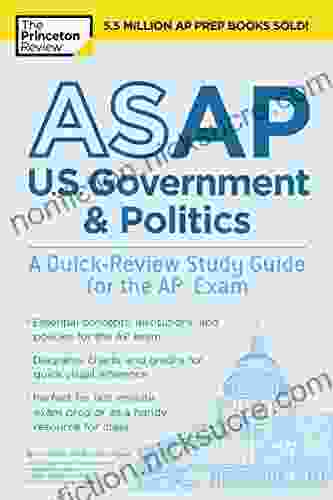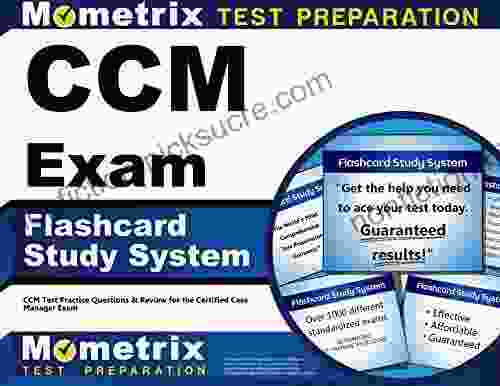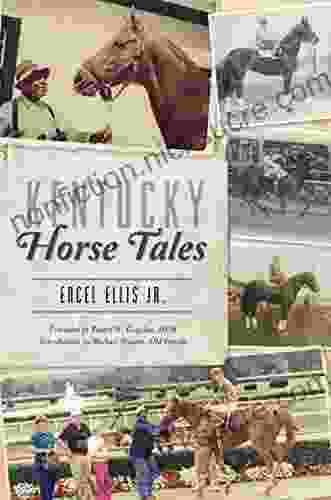Patriots and Loyalists in the American Revolution: A Comprehensive Exploration by Brands

As tensions escalated between Great Britain and its American colonies in the mid-18th century, the people of British North America found themselves increasingly polarized into two opposing factions: Patriots and Loyalists. Patriots, driven by a growing sense of American identity and a desire for self-governance, sought independence from the British Crown. Loyalists, on the other hand, remained loyal to the British government, believing that British rule offered stability and protection.
The divide between Patriots and Loyalists was not simply a matter of political allegiance but also encompassed fundamental differences in social, economic, and religious beliefs. This article delves into the complexities of these two groups, exploring their motivations, actions, and the impact they had on the course of the American Revolution.
4.8 out of 5
| Language | : | English |
| File size | : | 2744 KB |
| Text-to-Speech | : | Enabled |
| Enhanced typesetting | : | Enabled |
| Lending | : | Enabled |
| Screen Reader | : | Supported |
| Print length | : | 5 pages |
Defining Patriots and Loyalists
Patriots, also known as Whigs or Revolutionaries, were those who advocated for American independence from British rule. They argued that the British government was oppressive and that Americans had the natural right to govern themselves. Patriots came from all walks of life, including farmers, merchants, artisans, and lawyers. They were particularly strong in New England, where the Puritan tradition of self-reliance and independence had taken deep root.
Loyalists, also known as Tories, were those who remained loyal to the British Crown. They believed that American independence would lead to chaos and disorder, and they feared that the colonies would be unable to survive without British protection. Loyalists tended to be wealthier and more established than Patriots, and they included many government officials, merchants, and members of the Anglican Church. They were particularly strong in the southern colonies, where the economy was heavily dependent on trade with Britain.
Causes of the Divide
The division between Patriots and Loyalists stemmed from a complex interplay of factors, including:
* Political grievances: Patriots believed that the British government had violated their natural rights by imposing taxes and regulations without their consent. They were particularly incensed by the Stamp Act of 1765, the Townshend Acts of 1767, and the Tea Act of 1773. * Economic interests: Many Patriots were merchants and farmers who resented British mercantilism, which favored British interests over those of the colonies. They believed that independence would give them greater control over their own economic affairs. * Social and cultural differences: Patriots generally came from the lower and middle classes, while Loyalists were more likely to be wealthy and well-educated. Patriots were also more likely to be Protestant, while Loyalists were more likely to be Anglican.
The Course of the Revolution
The American Revolution began in 1775 with the Battle of Lexington and Concord. As the war progressed, Patriots and Loyalists fought on both sides, with Loyalists often forming Loyalist regiments to support the British army. Patriot forces eventually gained the upper hand, and the war ended in 1783 with the Treaty of Paris, which recognized American independence.
During the war, Patriots and Loyalists engaged in a bitter struggle for control of American territory. Patriots controlled most of New England, while Loyalists held sway in many southern colonies. The war also had a devastating impact on the civilian population, as both sides engaged in looting, burning, and other acts of violence.
The Aftermath of the Revolution
After the war, Patriots emerged victorious and established the United States of America. Loyalists, on the other hand, faced a difficult decision. Some chose to remain in the United States, while others fled to Britain or Canada. Those who remained faced discrimination and persecution, as they were often seen as traitors by their former Patriot neighbors.
The American Revolution had a profound impact on the development of American identity. The Patriots' victory proved that Americans were capable of governing themselves, and it inspired a new sense of national unity and pride. The Loyalists, on the other hand, were a reminder of the divisions that had existed within colonial society.
The division between Patriots and Loyalists in the American Revolution was a complex one, reflecting deep-seated differences in political, economic, and social beliefs. Patriots, driven by a desire for self-governance and a sense of American patriotism, fought to break away from British rule. Loyalists, on the other hand, remained loyal to the Crown, believing that American independence would lead to chaos and disorder. The war between these two groups was a bitter one, but it ultimately resulted in the establishment of the United States of America.
4.8 out of 5
| Language | : | English |
| File size | : | 2744 KB |
| Text-to-Speech | : | Enabled |
| Enhanced typesetting | : | Enabled |
| Lending | : | Enabled |
| Screen Reader | : | Supported |
| Print length | : | 5 pages |
Do you want to contribute by writing guest posts on this blog?
Please contact us and send us a resume of previous articles that you have written.
 Fiction
Fiction Non Fiction
Non Fiction Romance
Romance Mystery
Mystery Thriller
Thriller SciFi
SciFi Fantasy
Fantasy Horror
Horror Biography
Biography Selfhelp
Selfhelp Business
Business History
History Classics
Classics Poetry
Poetry Childrens
Childrens Young Adult
Young Adult Educational
Educational Cooking
Cooking Travel
Travel Lifestyle
Lifestyle Spirituality
Spirituality Health
Health Fitness
Fitness Technology
Technology Science
Science Arts
Arts Crafts
Crafts DIY
DIY Gardening
Gardening Petcare
Petcare Rob Neyer
Rob Neyer Catherine Carrigan
Catherine Carrigan Liz Arch
Liz Arch Jon Emmett
Jon Emmett Esther M Toddler
Esther M Toddler Marie Viljoen
Marie Viljoen Eden O Neill
Eden O Neill Peter Canning
Peter Canning Dr Sandeep Jatwa
Dr Sandeep Jatwa Christopher Scott
Christopher Scott Treehouse Books
Treehouse Books Reemus Boxing
Reemus Boxing Natalie C Parker
Natalie C Parker S Meloni M D
S Meloni M D Henry E Mejia
Henry E Mejia Patrick Garbin
Patrick Garbin Richard E Silverman
Richard E Silverman Patrick Vinton Kirch
Patrick Vinton Kirch Thomas Daniels
Thomas Daniels Jen L Grey
Jen L Grey Dahlia Adler
Dahlia Adler Nicole Conway
Nicole Conway Tracy Donegan
Tracy Donegan Harry K Mcevoy
Harry K Mcevoy Sonja Renee
Sonja Renee Edward Bulwer Lytton
Edward Bulwer Lytton Dan Buettner
Dan Buettner Richard Bronson
Richard Bronson Louis Turjanen
Louis Turjanen Suzanne Young
Suzanne Young Sarah Zettel
Sarah Zettel Margalis Fjelstad
Margalis Fjelstad John Allen
John Allen Nancy Cartwright
Nancy Cartwright Glinda Porter
Glinda Porter Tina Basich
Tina Basich Albert Gallatin Mackey
Albert Gallatin Mackey Stella Cottrell
Stella Cottrell Cora Rivers
Cora Rivers Don J Snyder
Don J Snyder Jens Meyer
Jens Meyer Mike Swedenberg
Mike Swedenberg Wendell Berry
Wendell Berry Robert F Moss
Robert F Moss Peter Owen
Peter Owen Jules Verne
Jules Verne David J Cox
David J Cox Susan Brink
Susan Brink James F Clapp
James F Clapp Jonathan Beverly
Jonathan Beverly Peterson S
Peterson S Nathan Fox
Nathan Fox Jaime Aron
Jaime Aron Warren Ellis
Warren Ellis Sammy Franco
Sammy Franco Danielle Paige
Danielle Paige Jim Cobb
Jim Cobb Michael Banton
Michael Banton Lina Chang
Lina Chang Brock Eide
Brock Eide Scott Lanning
Scott Lanning Gish Jen
Gish Jen Phil Dunmeyer
Phil Dunmeyer Dr Rex S Vanderwood
Dr Rex S Vanderwood Mantak Chia
Mantak Chia Mindy Mcginnis
Mindy Mcginnis Keely Hutton
Keely Hutton Marlo Payne Thurman
Marlo Payne Thurman Robert W Sussman
Robert W Sussman Mark Bacera
Mark Bacera Cheryl Kimball
Cheryl Kimball Ryan Robert
Ryan Robert David Goudsward
David Goudsward R A Palmer
R A Palmer Greg Stucky
Greg Stucky John R Weisz
John R Weisz James Rushforth
James Rushforth Joshua Berman
Joshua Berman Patrick Linsenmeyer
Patrick Linsenmeyer Christiane F
Christiane F Michael Medved
Michael Medved Denise Wiesner
Denise Wiesner Ross Campbell
Ross Campbell Kenny Dill
Kenny Dill Michael Mccreary
Michael Mccreary Jeffrey John Kripal
Jeffrey John Kripal Sean Fister
Sean Fister Tricia Levenseller
Tricia Levenseller Frank Runles
Frank Runles Stephen R Bown
Stephen R Bown John E Phillips
John E Phillips Samuel T Heart
Samuel T Heart Rachel Morgan
Rachel Morgan Marsha Vanwynsberghe
Marsha Vanwynsberghe Cindy Ross
Cindy Ross Isle Osaki
Isle Osaki Steve Brill
Steve Brill John Galeano
John Galeano Karl Polanyi
Karl Polanyi Todd Eklof
Todd Eklof Kahlil Gibran
Kahlil Gibran Janna Cawrse Esarey
Janna Cawrse Esarey David Grant Noble
David Grant Noble S L Watson
S L Watson Patrick Sweeney
Patrick Sweeney Rachel Simmons
Rachel Simmons Michael Paduch
Michael Paduch Sir John Franklin
Sir John Franklin Trevelyan
Trevelyan Patrick Schulte
Patrick Schulte Miles Howard
Miles Howard Katie Schnack
Katie Schnack Johannes W Rohen
Johannes W Rohen Viviana Gyori
Viviana Gyori Elsevier
Elsevier Thomas C Foster
Thomas C Foster Maryse Cardin
Maryse Cardin Rachel Swaby
Rachel Swaby Charlie Francis
Charlie Francis Jennifer M Sparks
Jennifer M Sparks Margot De Sevo
Margot De Sevo Clair Lasater
Clair Lasater John C Gordon
John C Gordon Emma Griffin
Emma Griffin Kay Gill
Kay Gill Roald Amundsen
Roald Amundsen Amanda Sterczyk
Amanda Sterczyk Kat Howard
Kat Howard Stephanie Greer
Stephanie Greer Lindsay Helm
Lindsay Helm Jeff Henigson
Jeff Henigson Nico Medina
Nico Medina Nancy Carter Crump
Nancy Carter Crump Keith Gave
Keith Gave Gareth Thomas
Gareth Thomas Bob Bell
Bob Bell Jim Parks
Jim Parks Schuld
Schuld Dk
Dk Jane Bottomley
Jane Bottomley Theodora Papatheodorou
Theodora Papatheodorou Creative Task
Creative Task Clara Dehlin
Clara Dehlin John Hoskison
John Hoskison William H Shellenberger
William H Shellenberger Kevin Dutton
Kevin Dutton Arrl Inc
Arrl Inc Pastor Ahyh
Pastor Ahyh Megan Miller
Megan Miller Kaplan Test Prep
Kaplan Test Prep Christopher Clarey
Christopher Clarey Warrior Primal
Warrior Primal Delaney Ruston
Delaney Ruston Kaiser Fung
Kaiser Fung Randall Bell
Randall Bell The Princeton Review
The Princeton Review Jessica Beck
Jessica Beck Steve Jamison
Steve Jamison Evy Poumpouras
Evy Poumpouras Howard Markel
Howard Markel Tahir Shah
Tahir Shah Joel Greenberg
Joel Greenberg David A Clark
David A Clark Katlin Middleton
Katlin Middleton Mike Schultz
Mike Schultz Jay Hoffman
Jay Hoffman W H C Bassetti
W H C Bassetti James O Aldrich
James O Aldrich Scott H Sicherer
Scott H Sicherer Jay Mccullough
Jay Mccullough Duncan Wells
Duncan Wells Tommy Hicks
Tommy Hicks John Volanthen
John Volanthen Malcolm Pearson
Malcolm Pearson Louise Greenspan
Louise Greenspan Christophe Morin
Christophe Morin Marie Mance
Marie Mance Quick Reads
Quick Reads Ken Setterington
Ken Setterington Kathryn Harkup
Kathryn Harkup Jenny Han
Jenny Han Stephen Brennan
Stephen Brennan Georg Rauch
Georg Rauch Les Stroud
Les Stroud N J Enfield
N J Enfield Curtis Retherford
Curtis Retherford Trevor Thomas
Trevor Thomas David J Hand
David J Hand Sport Hour
Sport Hour Rowan Blanchard
Rowan Blanchard Rebecca Rather
Rebecca Rather Catherine Legrand
Catherine Legrand Karen Horney
Karen Horney Len Mcdougall
Len Mcdougall Ennki Hakari
Ennki Hakari Scott O Morton
Scott O Morton Jasper Kent
Jasper Kent Michael Blackburn
Michael Blackburn Judy Bartkowiak
Judy Bartkowiak Randy Smith
Randy Smith Rough Guides
Rough Guides Russ Harris
Russ Harris Nitin Guptta
Nitin Guptta Elizabeth Noble
Elizabeth Noble Shauna L Shapiro
Shauna L Shapiro Richard Louv
Richard Louv Don Casey
Don Casey Michael Digiacomo
Michael Digiacomo Simone Abram
Simone Abram Robin Hanson
Robin Hanson Stuart A Klugman
Stuart A Klugman Kevan Harris
Kevan Harris David L Vance
David L Vance Larry Flax
Larry Flax Becky Kopitzke
Becky Kopitzke Nicole Galan
Nicole Galan Baz Thompson
Baz Thompson Jonathan Wolf
Jonathan Wolf Sara Woods
Sara Woods Craig Pittman
Craig Pittman Tessa Broad
Tessa Broad John Trent
John Trent Sally M Foster
Sally M Foster Hwei P Hsu
Hwei P Hsu Yuri Ulengov
Yuri Ulengov Nancy K O Leary
Nancy K O Leary Cecil Harris
Cecil Harris Darren Levine
Darren Levine Tim Cammisa
Tim Cammisa Nelson Simon
Nelson Simon Patrick Mcallister
Patrick Mcallister Greg Wyshynski
Greg Wyshynski Amanda Phillips
Amanda Phillips Tara Isabella Burton
Tara Isabella Burton Ronojoy Sen
Ronojoy Sen Nancy Northcott
Nancy Northcott Daniel Holzman
Daniel Holzman Chris Fitch
Chris Fitch Katy Madison
Katy Madison Elizabeth Fein
Elizabeth Fein Elizabeth Grosz
Elizabeth Grosz Kati Kleber
Kati Kleber Mark Golds
Mark Golds Ian Wilson
Ian Wilson Paddy Dillon
Paddy Dillon Team Golfwell
Team Golfwell Laurie Seale
Laurie Seale Paul Carus
Paul Carus Klaus Dodds
Klaus Dodds Jennifer Ward
Jennifer Ward Jay Walden
Jay Walden Jon Sherman
Jon Sherman Melinda Tankard Reist
Melinda Tankard Reist Mike White
Mike White Michael J Leahy
Michael J Leahy Joanna Grace
Joanna Grace Kenneth Rideout
Kenneth Rideout David Miller
David Miller Cory Mccartney
Cory Mccartney Bill Fawcett
Bill Fawcett Bill Douglas
Bill Douglas P C Cast
P C Cast Joseph A Mccullough
Joseph A Mccullough Frederick Courteney Selous
Frederick Courteney Selous Elizabeth Swire Falker
Elizabeth Swire Falker Dave Bergman
Dave Bergman Grace Mccready
Grace Mccready Dr Amanda Kemp
Dr Amanda Kemp Sam Jarman
Sam Jarman Matt Lewis
Matt Lewis Sam Chenery Morris
Sam Chenery Morris Christian Bates
Christian Bates Johann Weyer
Johann Weyer Robert Macfarlane
Robert Macfarlane Ron Kaspriske
Ron Kaspriske Genie Reads
Genie Reads Naomi Shihab Nye
Naomi Shihab Nye Simon Monk
Simon Monk Christopher Pike
Christopher Pike Mike Kephart
Mike Kephart Cliff Harris
Cliff Harris Stuart Mcrobert
Stuart Mcrobert Robin Dunbar
Robin Dunbar Shelly Crane
Shelly Crane Dale H Schunk
Dale H Schunk John Mccollister
John Mccollister Kevin Neary
Kevin Neary Anya Hayes
Anya Hayes Booksumo Press
Booksumo Press Terence Mclaughlin
Terence Mclaughlin Jane Watkins
Jane Watkins Michelle Cree
Michelle Cree Harry Bruinius
Harry Bruinius Richard Berry
Richard Berry Kindle Edition
Kindle Edition Creek Stewart
Creek Stewart Suzy Favor Hamilton
Suzy Favor Hamilton Cgp Books
Cgp Books Lee A Wilkinson
Lee A Wilkinson National Fastpitch Coaches Association
National Fastpitch Coaches Association Richard A Horsley
Richard A Horsley Julia Miele Rodas
Julia Miele Rodas John Flanagan
John Flanagan Stephen J Bavolek
Stephen J Bavolek Steve Hagen
Steve Hagen Debbie M Schell
Debbie M Schell Lane Rebelo
Lane Rebelo Sophie Delaplaine
Sophie Delaplaine J Bruce Brackenridge
J Bruce Brackenridge Jason Frye
Jason Frye Dina Rudick
Dina Rudick Marie Louise
Marie Louise Lisa Gache
Lisa Gache Stephanie Dueger
Stephanie Dueger Jason Reynolds
Jason Reynolds Donna R Causey
Donna R Causey King Heiple
King Heiple Dominic O Brien
Dominic O Brien Charmaine Mckissock
Charmaine Mckissock Blake Dresden
Blake Dresden Chloe Howard
Chloe Howard Daniel Lenihan
Daniel Lenihan Randall Hicks
Randall Hicks June Alexander
June Alexander Paula Derr
Paula Derr Arthur Hsieh
Arthur Hsieh Summary Genie
Summary Genie Leland Chant
Leland Chant John T Moore
John T Moore Chris Crutcher
Chris Crutcher Samaire Wynne
Samaire Wynne Kevin Muramatsu
Kevin Muramatsu Mary Catherine Bateson
Mary Catherine Bateson Victoria E Kress
Victoria E Kress Mohamed F El Hewie
Mohamed F El Hewie Chris Riddell
Chris Riddell Theron Hopkins
Theron Hopkins Patricia Burroughs
Patricia Burroughs Jessica Ashley
Jessica Ashley Peter Koning
Peter Koning Print Replica Kindle Edition
Print Replica Kindle Edition Michael Whitehead
Michael Whitehead Joanna Pruess
Joanna Pruess Chris Donaldson
Chris Donaldson Tim Harford
Tim Harford John Weir
John Weir Mark Hansen
Mark Hansen Charlie Walker
Charlie Walker James Stewart
James Stewart Stephanie Clarke
Stephanie Clarke Erika Stalder
Erika Stalder Rachel Griffin
Rachel Griffin Sydney George Fisher
Sydney George Fisher Lewis Hyde
Lewis Hyde Jennifer Mind
Jennifer Mind Ronald Wright
Ronald Wright Misty Jordyn
Misty Jordyn Kailyn Lowry
Kailyn Lowry Paul Nash
Paul Nash Mark Hatala
Mark Hatala Dermot Moran
Dermot Moran Celeste Shally
Celeste Shally G Bruce Knecht
G Bruce Knecht Kristin Cashore
Kristin Cashore Jeff Carreira
Jeff Carreira Zoe Mckey
Zoe Mckey Brother Nero
Brother Nero Stefanie Reinhold
Stefanie Reinhold Hal Roth
Hal Roth Penny Simkin
Penny Simkin John Schwartz
John Schwartz Michelle D Swaney
Michelle D Swaney Patrick M Browning
Patrick M Browning Hakim Isler
Hakim Isler Michael Lempert
Michael Lempert J Phillip Stonewater
J Phillip Stonewater Lynette Noni
Lynette Noni Sabaa Tahir
Sabaa Tahir Grant Andrews
Grant Andrews Jacques Steinberg
Jacques Steinberg Patrice Karst
Patrice Karst Vassos Alexander
Vassos Alexander Chris Mccormack
Chris Mccormack Rui Zhi Dong
Rui Zhi Dong Tamara Ferguson
Tamara Ferguson Asato Asato
Asato Asato Daniel S Newman
Daniel S Newman Lester Kaufman
Lester Kaufman Nick Fragel
Nick Fragel Doug Gaskill
Doug Gaskill Dawn M Mcbride
Dawn M Mcbride Ronni Lundy
Ronni Lundy Heather Jacobson
Heather Jacobson Marlene Laruelle
Marlene Laruelle Tony J Bell
Tony J Bell Dennis Fisher
Dennis Fisher Lynn Melnick
Lynn Melnick Kevin Estela
Kevin Estela Sandy Gingras
Sandy Gingras Michael Plymel
Michael Plymel Paul Farmer
Paul Farmer Dodie Smith
Dodie Smith Doc Severson
Doc Severson Marlo Gottfurcht Longstreet
Marlo Gottfurcht Longstreet Ryan Skinner
Ryan Skinner Denise Alvarado
Denise Alvarado Thomas Norman Dewolf
Thomas Norman Dewolf Dan Reeder
Dan Reeder Sjaak Laan
Sjaak Laan Laura Sebastian
Laura Sebastian Christopher Ives
Christopher Ives Felix Eshesimua
Felix Eshesimua Tania Israel
Tania Israel Drew Clifton
Drew Clifton Stephanie Evans
Stephanie Evans Johannes Krause
Johannes Krause Karla Marie Williams
Karla Marie Williams Richard S Westfall
Richard S Westfall Jacqueline Melvin
Jacqueline Melvin Delia Owens
Delia Owens Hal Herzog
Hal Herzog Jim Al Khalili
Jim Al Khalili Kevin C Kelleher Md Md
Kevin C Kelleher Md Md Martin W Ball
Martin W Ball Lefty Kreh
Lefty Kreh Lawrence Schiller
Lawrence Schiller Nicholas Sparks
Nicholas Sparks Preston Peet
Preston Peet Conrad Fischer
Conrad Fischer Ross Bentley
Ross Bentley Anton Szandor Lavey
Anton Szandor Lavey Quad Webb
Quad Webb Ethan Bezos
Ethan Bezos Maggie Oakes
Maggie Oakes Heather A Smith
Heather A Smith Richard Wiseman
Richard Wiseman Stefanie Weisman
Stefanie Weisman Chris Gosden
Chris Gosden Kate Pankhurst
Kate Pankhurst Johnjoe Mcfadden
Johnjoe Mcfadden Christopher Heaney
Christopher Heaney Martina Sprague
Martina Sprague Reid Henrichs
Reid Henrichs Maria Del Russo
Maria Del Russo Chrissie Wellington
Chrissie Wellington Dr Robert Demaria
Dr Robert Demaria Iman Hami
Iman Hami Martin E P Seligman
Martin E P Seligman Theodore Gray
Theodore Gray Larry Olmsted
Larry Olmsted Glenn Doman
Glenn Doman Dave King
Dave King Dan Flores
Dan Flores Ken Palmer
Ken Palmer Konstantinos Mylonas
Konstantinos Mylonas William Wasserman
William Wasserman Clifford Geertz
Clifford Geertz Jenna Helland
Jenna Helland Steven D Fleming
Steven D Fleming William Macaskill
William Macaskill Chris Jake
Chris Jake Peter Townsend
Peter Townsend Sean Herman
Sean Herman Frank Close
Frank Close Ron Maly
Ron Maly Daniel Loxton
Daniel Loxton Jessica Lander
Jessica Lander Joan Naidorf
Joan Naidorf Law School Admission Council
Law School Admission Council Alejandro Sequera
Alejandro Sequera Nick Muxlow
Nick Muxlow Rachel Dickinson
Rachel Dickinson Matt Brown
Matt Brown Christopher Barile
Christopher Barile David Baldacci
David Baldacci Dave Wilson
Dave Wilson Mariamelys Yanez
Mariamelys Yanez Grant Cunningham
Grant Cunningham Jennifer Kolari
Jennifer Kolari Susan K Grove
Susan K Grove Jack Burns
Jack Burns Nathan Holder
Nathan Holder Pam Coburn
Pam Coburn Dave Canterbury
Dave Canterbury Keith Ryan Cartwright
Keith Ryan Cartwright Christine H Morton
Christine H Morton Haylie Duff
Haylie Duff Pavla Kesslerova
Pavla Kesslerova Sig Hansen
Sig Hansen James Morgan Ayres
James Morgan Ayres Helen Barry Siragusa
Helen Barry Siragusa J Franklin Snyder
J Franklin Snyder Erika Buenaflor M A J D
Erika Buenaflor M A J D Bill Patton
Bill Patton Paul Bellow
Paul Bellow Michael J Bennett
Michael J Bennett Havilah Babcock
Havilah Babcock John H Hanson
John H Hanson Susan Campbell Bartoletti
Susan Campbell Bartoletti Jo A Kaucher
Jo A Kaucher Ronald Williams
Ronald Williams Glen Heggstad
Glen Heggstad Henry Hatcher
Henry Hatcher Sarah Bennett
Sarah Bennett Robin Donovan
Robin Donovan Irene Mchenry
Irene Mchenry Zara Fagen
Zara Fagen
Light bulbAdvertise smarter! Our strategic ad space ensures maximum exposure. Reserve your spot today!

 Tony CarterThe Modern Midwife's Guide to Pregnancy, Birth, and Beyond: A Comprehensive...
Tony CarterThe Modern Midwife's Guide to Pregnancy, Birth, and Beyond: A Comprehensive...
 Ibrahim BlairThe Ultimate Outer Banks Travel Guide: Everything You Need to Know Before You...
Ibrahim BlairThe Ultimate Outer Banks Travel Guide: Everything You Need to Know Before You... Joe SimmonsFollow ·5.1k
Joe SimmonsFollow ·5.1k Jerome BlairFollow ·10.2k
Jerome BlairFollow ·10.2k Joseph HellerFollow ·17.9k
Joseph HellerFollow ·17.9k Brady MitchellFollow ·11.5k
Brady MitchellFollow ·11.5k Isaac MitchellFollow ·7.4k
Isaac MitchellFollow ·7.4k Ira CoxFollow ·12.6k
Ira CoxFollow ·12.6k Craig BlairFollow ·16.5k
Craig BlairFollow ·16.5k W.H. AudenFollow ·8.8k
W.H. AudenFollow ·8.8k

 Jarrett Blair
Jarrett BlairThe Science Of Horror: Unmasking the Neuroscience Behind...
Horror, a genre that...

 Braden Ward
Braden WardIce Cream with Daddy: A Sweet and Savory Summer Memory
Ice cream with daddy...

 Daniel Knight
Daniel KnightThe Beginner's Guide to Must-Know Memory Tricks to Pass...
Are you a nursing...

 Kazuo Ishiguro
Kazuo IshiguroASAP Government Politics: A Comprehensive Analysis of Its...
In recent years, there has...

 Neal Ward
Neal WardTales From The Denver Broncos Sideline: An Unforgettable...
The Broncos' Unwavering Spirit The...
4.8 out of 5
| Language | : | English |
| File size | : | 2744 KB |
| Text-to-Speech | : | Enabled |
| Enhanced typesetting | : | Enabled |
| Lending | : | Enabled |
| Screen Reader | : | Supported |
| Print length | : | 5 pages |










